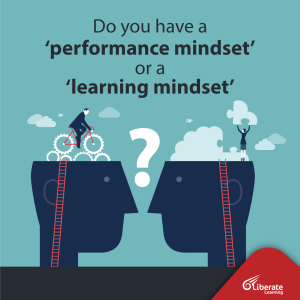The Performance Gap Dilemma: Do You Need a Learning or Performance Focus?
 How to address performance gaps? When it comes to enhancing organisational performance, it is crucial to have clear expectations in mind. One question that often arises is whether to focus on learning outcomes or performance outcomes. Learning outcomes refer to the knowledge and skills individuals acquire through training and development initiatives. On the other hand, performance outcomes are the tangible results and improvements observed at work. While both are critical, striking a balance between the two is key. By prioritising learning outcomes, organisations can ensure that employees have the necessary knowledge and skills to perform their roles effectively. At the same time, focusing on performance outcomes allows organisations to measure the impact of their initiatives and drive real change within the organisation. Ultimately, a combination of both learning and performance outcomes is essential for enhancing organisational performance; so, how can that be achieved?
How to address performance gaps? When it comes to enhancing organisational performance, it is crucial to have clear expectations in mind. One question that often arises is whether to focus on learning outcomes or performance outcomes. Learning outcomes refer to the knowledge and skills individuals acquire through training and development initiatives. On the other hand, performance outcomes are the tangible results and improvements observed at work. While both are critical, striking a balance between the two is key. By prioritising learning outcomes, organisations can ensure that employees have the necessary knowledge and skills to perform their roles effectively. At the same time, focusing on performance outcomes allows organisations to measure the impact of their initiatives and drive real change within the organisation. Ultimately, a combination of both learning and performance outcomes is essential for enhancing organisational performance; so, how can that be achieved?
Skill gaps vs training needs – What is the difference?
Skill gaps and training needs are two related but distinct concepts in the context of organisational development. A skill gap refers to the disparity between employees’ skills and competencies and the skills required to effectively perform their roles. It is essentially the difference between the existing and the desired skill set.
On the other hand, training needs refer to specific areas where employees require additional training or development to bridge the skill gap. Training needs are identified through various methods such as performance evaluations, supervisor feedback, and analysis of job requirements. These needs can vary from technical skills to soft skills, depending on job roles and organisational goals. It is easy to jump to conclusions and assume a training/learning need behind performance gaps; this is why a thorough root cause analysis to understand the business problem that needs to be solved is necessary, and a “performance first” mindset may help widen the thinking horizon in finding the appropriate solutions.
The role of metrics
Metrics play a vital role in shaping the right balance between learning and performance outcomes. By using key performance indicators (KPIs), organisations can measure and track the effectiveness of their initiatives and ensure that they drive the desired outcomes.
For example, one KPI could be the percentage of employees who successfully apply the knowledge and skills acquired through training in their day-to-day work. This metric helps assess the impact of learning initiatives on performance outcomes. Another KPI could be the reduction in error rates or customer complaints, which indicates training effectiveness in improving performance outcomes. Additionally, organisations can use KPIs such as employee engagement scores or productivity levels to gauge the overall impact of learning and performance support initiatives on organisational performance. By leveraging the right metrics, organisations can make data-driven decisions and strike the right balance between learning and performance outcomes to enhance organisational performance.
The integral role of learning and communications in closing performance gaps
For a team to excel and achieve exceptional results, team members must have access to high-quality learning opportunities. This includes training programs, workshops, and resources that enable them to continuously develop their skills and knowledge. By investing in the quality of learning and communication campaigns, teams can stay up to date with industry trends. They can also acquire updated competencies and enhance their overall performance with just-in-time support measures rolled out over time.
Effective communication is another critical factor in high-performing teams. Clear and open communication channels foster collaboration, trust, and shared understanding among team members. It enables them to exchange ideas, provide feedback, and learn from and about each other. Strong communication also ensures that everyone is aligned with the team’s goals and objectives, reducing misunderstandings, and promoting a sense of unity. This is even more relevant at the beginning of a learning journey when new skills and knowledge need to be road-tested and practised in real-life.
When the quality of learning and communication is prioritised, high-performing teams can thrive. They are equipped with the necessary skills and knowledge to tackle challenges, adapt to changes, and drive innovation. Moreover, effective communication creates an environment where ideas flow freely, diverse perspectives are valued, and team members feel empowered and supported to contribute to their full potential. Ultimately, quality learning and communication are powerful catalysts for success in high-performing teams.
